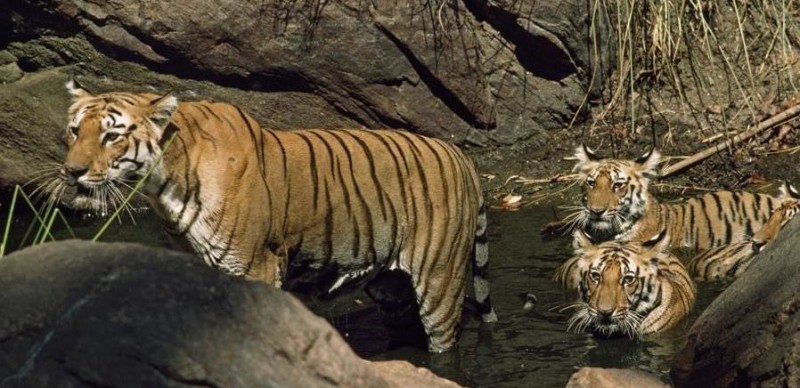
The tiger, Panthera tigris, is one of the most iconic and awe-inspiring creatures to have ever roamed our planet. Revered for its strength, grace, and beauty, this majestic feline has captivated the human imagination for centuries. Throughout history, tigers have played a significant role in various cultures and ecosystems, leaving an indelible mark on the world. This article delves into the rich and fascinating history of tigers, tracing their journey from ancient times to the modern era.
Ancient Times:
The tiger's history can be traced back millions of years to the early Pleistocene epoch when its ancestors, known as the saber-toothed cats, ruled the prehistoric landscapes. Fossil evidence suggests that tigers diverged from other big cat species around two to three million years ago. The presence of tigers in ancient civilizations is evident through cave paintings and artifacts discovered in regions like India, China, and Southeast Asia. These depictions often associate tigers with symbols of strength, courage, and royalty, making them an integral part of folklore and mythology.
Tiger Cultures:
Throughout history, various civilizations have developed a deep fascination and respect for tigers. In ancient China, tigers were considered as powerful protectors against evil spirits, and their images adorned artifacts, garments, and even palace walls. Chinese emperors were believed to possess the qualities of tigers, and tiger motifs frequently symbolized strength and authority. In India, the tiger has long held a sacred status, representing the goddess Durga and serving as a symbol of bravery and royalty. The famous Bengal tiger was celebrated in Indian art, literature, and religious practices, solidifying its position as the national animal of India.
Tigers in the Wild:
Tigers once roamed vast territories across Asia, from the dense jungles of India to the snowy landscapes of Siberia. Historically, they inhabited regions ranging from the Caspian Sea in the west to the Russian Far East in the east and from the northern reaches of China down to the Indonesian island of Bali. These magnificent creatures were not only majestic predators but also vital components of their ecosystems, playing a crucial role in maintaining the balance of nature. However, human activities, such as habitat destruction and hunting, began to threaten tiger populations during the last few centuries.
Colonial Era and Trophy Hunting:
The 19th and early 20th centuries witnessed a significant decline in tiger populations due to colonial hunting practices. European rulers and aristocrats engaged in trophy hunting, considering tigers as symbols of their prowess and domination over the wild. This era marked a devastating period for tiger populations, especially in India, where the species faced alarming declines. The Bengal tiger, once abundant across the Indian subcontinent, became endangered due to relentless hunting and habitat loss.
Conservation Efforts:
As the realization of the tiger's impending extinction became apparent, conservation efforts began to emerge. In 1973, India took a monumental step by launching "Project Tiger," an initiative aimed at protecting the remaining tiger habitats and increasing tiger numbers. Other countries soon followed suit, establishing their conservation programs. International organizations and governments collaborated to protect tiger habitats, curb poaching, and combat the illegal wildlife trade. The establishment of tiger reserves and national parks provided safe havens for tigers to thrive.
Modern Challenges and the Road Ahead:
Despite significant conservation efforts, tigers continue to face threats in the modern world. Habitat destruction, human-wildlife conflict, and poaching persist as major challenges. Climate change also poses new risks to these magnificent creatures, impacting their habitats and prey. However, there is hope. Increased awareness, stricter wildlife protection laws, and community engagement have shown positive results in some regions. Technology, such as camera traps and satellite monitoring, aids in tracking and studying tiger populations effectively.
The history of tigers is a tale of admiration, awe, and urgency. From their ancient symbolism in various cultures to the modern conservation efforts, the journey of tigers reflects the complex relationship between humans and the natural world. Preserving these regal predators for future generations requires a concerted global effort, underscoring the significance of maintaining a delicate balance between human development and wildlife conservation. Only then can we secure a prosperous future for these magnificent creatures, ensuring they continue to inspire and grace our planet for generations to come.
Surviving Oppression: How Hinduism Prevailed Despite the Inquisition
From Sanyasi to Rebel Leader: The Inspiring Journey of Alluri Sitarama Raju
Bhikaiji Rustom Cama: The Fearless Mother of the Indian Revolution